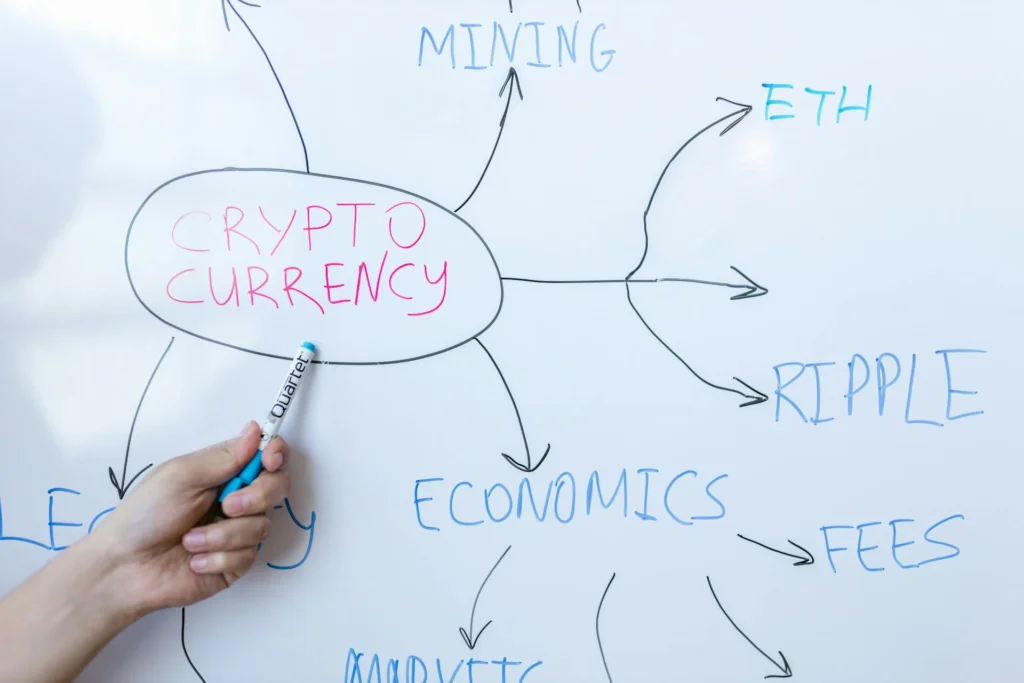The financial landscape is undergoing a fundamental transformation as tokenization platforms emerge as powerful catalysts for asset digitization and liquidity enhancement. This revolutionary technology is reshaping how traditional assets—from real estate and commodities to artwork and intellectual property—are structured, traded, and accessed in the digital economy. By converting physical and intangible assets into digital tokens on blockchain networks, these platforms are democratizing investment opportunities while creating unprecedented levels of market efficiency and accessibility.
Asset tokenization represents more than a technological advancement; it’s a paradigm shift that addresses long-standing challenges in traditional finance, including illiquidity, high transaction costs, and limited accessibility to premium investment opportunities. As institutional investors and retail participants alike recognize the transformative potential of this technology, the global tokenization market is experiencing exponential growth, with projections indicating a compound annual growth rate exceeding 24% through 2030.
The convergence of blockchain technology, smart contracts, and regulatory frameworks is creating an ecosystem where fractional ownership becomes seamless, cross-border transactions are simplified, and 24/7 trading capabilities extend beyond traditional market hours. This technological infrastructure is not merely digitizing existing processes but fundamentally reimagining how value is created, stored, and transferred in the modern economy.
Major financial institutions, technology companies, and innovative startups are investing billions in tokenization infrastructure, recognizing its potential to unlock trillions of dollars in previously illiquid assets. From JPMorgan’s JPM Coin to emerging platforms specializing in real estate tokenization, the market is witnessing unprecedented innovation and adoption across diverse asset classes and geographic regions.
Background & Historical Analysis
The concept of asset tokenization emerged from the intersection of traditional securitization practices and blockchain technology innovations that gained prominence in the early 2010s. While the underlying principles of fractional ownership and asset-backed securities have existed for decades, the advent of blockchain technology provided the technical infrastructure necessary to create programmable, transparent, and globally accessible digital representations of physical and intangible assets.
Early tokenization efforts focused primarily on cryptocurrency-based assets and initial coin offerings (ICOs) between 2016 and 2018. However, the market quickly evolved beyond speculative digital assets toward practical applications in real-world asset digitization. The development of Ethereum’s smart contract capabilities in 2015 provided the foundational technology for creating sophisticated tokenization protocols that could automate complex financial transactions and ensure compliance with regulatory requirements.
The evolution from theoretical concept to practical implementation gained significant momentum following the introduction of security token offerings (STOs) in 2018, which addressed regulatory concerns while maintaining the technological advantages of blockchain-based asset representation. This development marked a crucial turning point, as institutional investors and regulatory bodies began recognizing tokenization as a legitimate financial instrument rather than a speculative technology experiment.
Historical analysis reveals three distinct phases in tokenization platform development. The first phase (2015-2017) focused on basic token creation and cryptocurrency applications. The second phase (2018-2020) emphasized regulatory compliance and institutional adoption, with platforms developing sophisticated know-your-customer (KYC) and anti-money laundering (AML) capabilities. The current third phase, beginning in 2021, is characterized by mainstream adoption, cross-chain interoperability, and integration with traditional financial systems.
Notable early successes include the tokenization of real estate properties, where platforms like RealT and Harbor demonstrated the viability of fractional real estate ownership through blockchain technology. These pioneering efforts proved that complex assets with traditionally high barriers to entry could be democratized through tokenization, setting the stage for broader market adoption across diverse asset classes.
The regulatory landscape has evolved significantly during this period, with jurisdictions worldwide developing frameworks specifically addressing tokenized assets. The European Union’s Markets in Crypto-Assets (MiCA) regulation and similar initiatives in Singapore, Switzerland, and the United States have provided crucial legal clarity, enabling institutional participation and fostering innovation within defined regulatory boundaries.
Expert Analysis & Current Implications
Industry experts consistently identify liquidity enhancement as the most transformative aspect of asset tokenization platforms. Traditional illiquid assets, such as commercial real estate, private equity, and fine art, historically required substantial capital commitments and lengthy holding periods. Tokenization platforms address these limitations by enabling fractional ownership, reducing minimum investment thresholds, and creating secondary markets for previously illiquid assets.
Leading blockchain researchers emphasize that tokenization’s impact extends beyond simple digitization to fundamental improvements in market efficiency. Smart contracts embedded within tokenized assets automate dividend distributions, voting rights, and compliance procedures, reducing administrative costs and eliminating intermediaries that traditionally added complexity and expense to asset management processes. This automation creates more efficient markets while ensuring transparent and immutable transaction records.
Financial technology analysts highlight the democratization effect of tokenization platforms, which enable retail investors to access previously exclusive investment opportunities. A $10 million commercial property can be tokenized into millions of individual tokens, allowing investors to participate with minimal capital while maintaining proportional ownership rights and benefits. This fractional ownership model is reshaping investment accessibility across multiple asset classes.
Regulatory experts note that current tokenization platforms are successfully balancing innovation with compliance requirements. Modern platforms implement sophisticated compliance mechanisms, including programmable restrictions on token transfers based on investor accreditation status, geographic limitations, and regulatory requirements. These built-in compliance features address regulatory concerns while maintaining the technological advantages of blockchain-based asset representation.
Technology specialists emphasize the importance of interoperability in current tokenization platform development. Leading platforms are adopting cross-chain protocols that enable tokenized assets to operate across multiple blockchain networks, increasing liquidity and reducing dependency on single blockchain ecosystems. This interoperability is crucial for mainstream adoption and long-term market stability.
Market data indicates significant growth in tokenization platform adoption across diverse sectors. Real estate tokenization platforms have processed over $2 billion in transactions, while commodity tokenization initiatives are gaining traction among institutional investors seeking portfolio diversification. The art market, traditionally characterized by opacity and limited accessibility, is experiencing transformation through platforms that enable fractional ownership of masterpiece artworks.
Risk management professionals identify key challenges in current tokenization implementations, including technological risks, regulatory uncertainties, and market liquidity concerns. However, these experts also note that emerging platforms are developing sophisticated risk mitigation strategies, including insurance products specifically designed for tokenized assets and comprehensive audit mechanisms that ensure asset backing and platform integrity.
Future Outlook & Strategic Recommendations
The future trajectory of tokenization platforms points toward unprecedented integration with traditional financial systems and exponential growth across multiple asset classes. Industry forecasts suggest that tokenization will become a standard practice for asset digitization within the next decade, with traditional financial institutions increasingly adopting blockchain-based infrastructure for routine operations including settlement, custody, and compliance management.
Strategic analysis indicates that successful tokenization platforms will differentiate themselves through specialized expertise in specific asset classes rather than attempting broad-based approaches. Platforms focusing on real estate tokenization are developing sophisticated property valuation mechanisms and rental income distribution systems, while those targeting commodities are creating supply chain transparency features and quality assurance protocols that add value beyond simple digitization.
Technology roadmaps for leading tokenization platforms emphasize artificial intelligence integration for enhanced asset valuation, risk assessment, and market prediction capabilities. Machine learning algorithms are being developed to analyze market trends, optimize token pricing, and provide predictive analytics that benefit both platform operators and investors. This AI integration represents a significant competitive advantage for platforms that successfully implement these technologies.
Regulatory developments are expected to accelerate tokenization adoption through clearer legal frameworks and standardized compliance procedures. Upcoming regulations in major financial centers are likely to provide definitive guidance on token classification, investor protection requirements, and cross-border transaction protocols. These regulatory clarifications will remove uncertainty barriers that currently limit institutional participation in tokenization markets.
International collaboration initiatives are emerging to create standardized protocols for tokenized asset recognition across jurisdictions. These efforts, supported by organizations like the International Organization of Securities Commissions (IOSCO), aim to create seamless cross-border tokenized asset trading while maintaining appropriate regulatory oversight and investor protection measures.
Strategic recommendations for organizations considering tokenization platform implementation include thorough regulatory compliance assessment, robust technology infrastructure development, and comprehensive investor education programs. Successful platforms prioritize user experience, security, and transparency while building trust through demonstrated regulatory compliance and operational excellence.
Investment strategies should focus on platforms with proven track records, strong regulatory compliance frameworks, and innovative technology implementations. Due diligence processes must evaluate platform security measures, asset custody procedures, and the qualifications of management teams with relevant experience in both traditional finance and blockchain technology.
The convergence of tokenization platforms with decentralized finance (DeFi) protocols presents additional opportunities for liquidity enhancement and yield generation. Future platforms are likely to integrate lending, borrowing, and staking mechanisms that enable tokenized asset holders to generate additional returns while maintaining ownership positions. This integration will create more sophisticated and attractive investment opportunities that combine the benefits of traditional asset ownership with innovative DeFi capabilities.
As token



